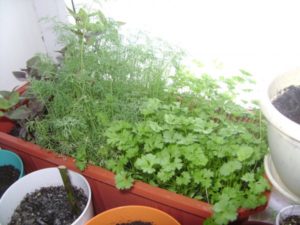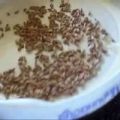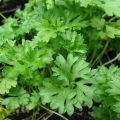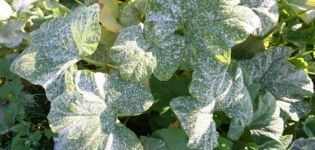Types of parsley diseases in the garden, how to treat them and what to do
It is difficult to imagine good nutrition without greens. It contains a huge amount of useful microelements that have a beneficial effect on the work of the whole organism. Parsley is one of the most affordable varieties of greens that grows in almost every vegetable garden. Despite the ease of cultivation, the crop is often subject to diseases that can deprive, if not all, then a significant part of the crop. To prevent this from happening, consider the varieties of parsley diseases and how to deal with them.
Diseases of parsley
Growing parsley in their garden, summer residents should pay special attention to disease prevention. The fact is that this culture is susceptible to many diseases: fungal, non-infectious, bacterial and others.
They lead to decay of root crops, dramatically reduce plant growth and the amount of greenery. And some of them completely deprive the crop. This is the main reason why gardeners take preventive protective measures. If the disease has already affected the culture, measures should be taken urgently.
Powdery mildew
This is the most common crop disease, manifested by a characteristic whitish bloom over the entire surface of the plants. Gradually, the bloom darkens, and with it leaves and stems deteriorate. The greens become tough, and with the slightest movement they crumble easily.
The disease spreads quickly with sudden temperature changes, persistent heat and dew. Powdery mildew pathogens persist on weeds and plant debris.
Pillar
It is expressed by a reddish tint of the entire surface of parsley leaves. The disease, as a rule, leads to the formation of peduncles in the first year of plant life. Such seeds usually do not take root or lag significantly behind in development.

Septoria or white spot of parsley
The characteristic whitish spots affect the leaves of the culture on both sides. The disease manifests itself both on adult plants and on small seedlings. Lesions in the form of spots can be noted over the entire surface of parsley: on the leaves, stems, petioles.
From the second half of summer, irregular spots form on the lower leaves of parsley, which gradually change from brown to off-white. Only characteristic dark brown edges remain at the edges of the spots. Gradually, the disease moves to the upper leaves of the greenery. If you look closely, you can see elongated brown spots on the stalks and stems of plants.
Rust
Initially, yellow-brown spots are formed on the underside of the leaves.Gradually, the pathological process covers the entire terrestrial part of the plants. On the petioles, leaves and stems, small brown spots are formed, the diameter of which ranges from 0.7 cm. The spots can be scattered or grouped. The disease manifests itself, as a rule, in June.
Parsley rust is a fungal disease that can develop over several generations during the summer. Closer to autumn, the disease tends to manifest itself as continuous dark brown spots.
The affected leaves turn yellow, dry out, and lose useful trace elements and taste.
Fomoz
This disease is also called brown, dry rot. Closer to the base of the stems and in places of foliage branching, elongated, purple specks and dark stripes are formed. In parallel, this process can be accompanied by the release of a sticky mass. Gradually, the affected areas dry out and become covered with a fungal bloom.
Oversporosis
The disease manifests itself in the early stages of development of the umbrella. It affects all parts of the plant. A characteristic white bloom forms on the leaves. The affected roots stop growing, as a result of which the plant becomes corrugated and small. During and after flowering, the baskets and leaves are covered with pale or dark green spots.
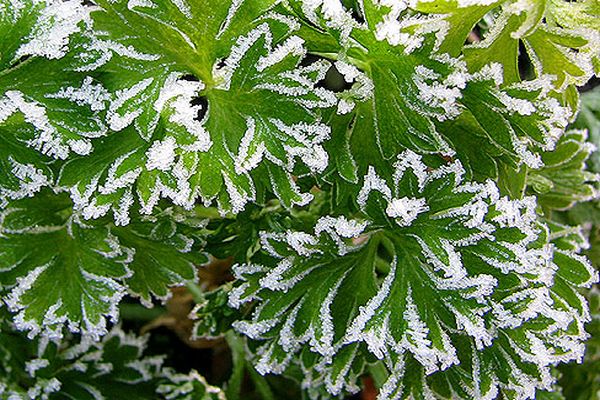
If oversporosis affects large plants, the manifestation of the disease begins with the upper leaves. Areas near the main veins turn yellow. Gradually, a white bloom appears on the underside of the leaves, resembling cotton wool in consistency. The disease leads to the thinning of plants, as a result of which up to 30% of the crop can be lost.
Fighting parsley diseases
It is easier to prevent any disease than to save the plant from death. This requires proper care of the crop: timely feeding, fertilization, weed control, soil loosening. But what if the pests have already attacked? In this case, you should start an active struggle.
You can fight powdery mildew with colloidal or ground sulfur. With the help of a cotton pad, they lubricate the leaves and stems of plants. If the disease continues to spread, the greens are treated with mullein infusion. Plants affected by the disease are uprooted and thrown away from the garden plot.
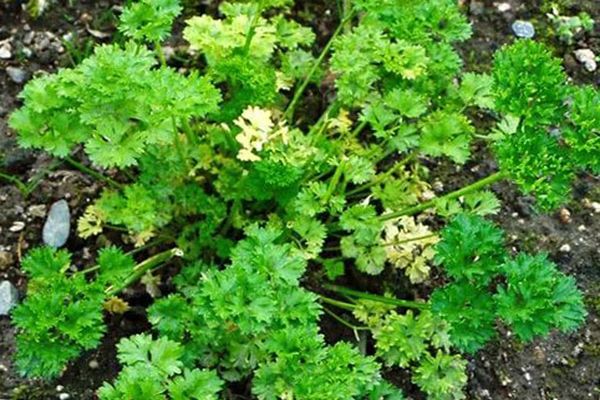
Note! To reduce the likelihood of disease, it is important to alternate growing parsley with tomatoes, legumes and beets.
If parsley is grown in a greenhouse, it is important to observe the temperature regime for the prevention of diseases (not lower than 20 degrees at night, and not lower than 24 degrees during the day).
It is important to know that many diseases are seed-borne. Therefore, in a comprehensive fight against them, it is important to adhere to the following measures:
- carry out foliar spraying using a 0.04% borax solution;
- fertilize areas for crops with potash and phosphorus agents;
- destroy all plant and weed residues after harvesting;
- sow parsley in well-drained and ventilated soil;
- perform timely thinning of plants; this method will reduce the likelihood of powdery mildew damage.
It is very important to decontaminate the seeds before sowing. They are soaked for 20 minutes in water, the temperature of which is not higher than 20 degrees. Then it is cooled in cold water and dried.

